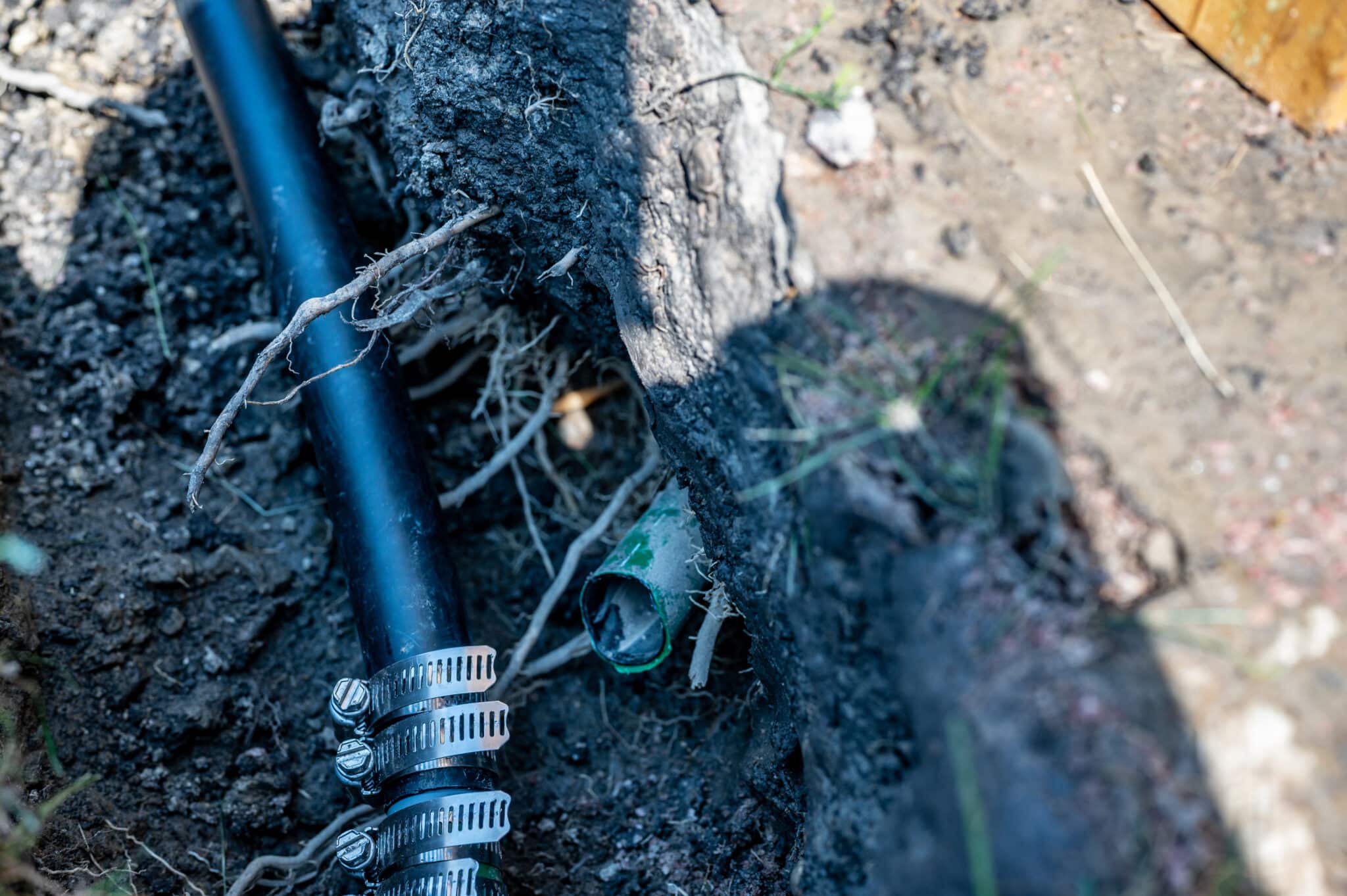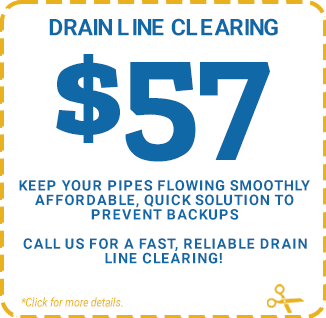Reliable Repairs for Critical Water Line Breaks

How often do you think about the water line that quietly supports your daily life? For most homeowners and business owners, it is out of sight and out of mind—until something goes wrong. A functioning water line is the lifeblood of any property, ensuring clean water flows consistently for drinking, cooking, cleaning, and maintaining hygiene. Without it, even the simplest tasks become monumental challenges.
Water line breaks are not just inconvenient; they can cause severe disruptions and financial headaches. Common culprits include aging pipes that corrode over time, invasive tree roots seeking moisture, and shifting soil caused by weather changes or construction activity. Extreme temperature fluctuations can also place stress on your pipes, leading to cracks or sudden failures. These issues can escalate quickly, resulting in water damage, reduced pressure, or rising utility bills.
Understanding the importance of a properly functioning water line—and recognizing the early warning signs of trouble—is the first step in protecting your property. By staying vigilant and addressing issues proactively, you can avoid costly repairs, maintain consistent water access, and ensure your plumbing system serves you efficiently for years to come.
Common Causes of Water Line Breaks
A water line break is more than just a plumbing issue—it is a potential disaster waiting to happen. Understanding the common causes of water line breaks is essential for preventing costly repairs, protecting your property, and ensuring your daily routine runs without interruptions. These breaks do not just happen out of the blue; they are often the result of avoidable problems or natural forces at work over time.
Aging infrastructure is one of the most frequent culprits. Pipes made from older materials like galvanized steel or cast iron corrode and weaken over time, leading to cracks, leaks, and eventually full-blown breaks. If your home or business has not updated its plumbing system in decades, your water line may already be operating on borrowed time.
Tree roots are another hidden threat. While trees beautify your property, their roots seek out water sources underground. Unfortunately, your water line becomes an unintended target. Over time, roots wrap around pipes and apply pressure, causing fractures or punctures that lead to leaks. This issue often goes unnoticed until the damage becomes extensive.
Soil movement and ground shifts also play a significant role. Construction activity near your property, natural soil settling, or even minor seismic activity can disturb the ground around your water line. These movements cause pipes to bend, crack, or separate, leaving you with a costly repair.
Extreme weather conditions are another major contributor. Freezing temperatures in winter cause water inside pipes to expand, creating immense pressure that leads to bursts. On the flip side, summer heat can dry out soil, making it shift and destabilize pipes. Both scenarios put your water line at risk of breaking when you least expect it.
Lastly, high water pressure is a silent but persistent problem. While strong water flow might seem desirable, excessive pressure places constant strain on pipes, weakening them over time. Eventually, even small cracks can escalate into catastrophic breaks.
These common causes highlight why regular maintenance and early detection are critical. By addressing issues such as aging pipes, intrusive roots, or soil shifts before they escalate, you can prevent costly water line emergencies. Remember, a proactive approach today can save you from significant damage and disruption tomorrow. Protecting your water line is not just smart—it is essential.

Photo from iStock – Credit: Dominic Luongo
Signs Indicating a Water Line Break
Water line breaks are not just inconvenient—they can be costly, damaging, and highly disruptive if not addressed quickly. While these issues might not always be obvious, there are some clear indicators that your water line could be in trouble. Recognizing these signs early can help you avoid expensive repairs and unnecessary headaches.
-
Unexpected Water Pressure Changes
Have you noticed that your shower or faucets suddenly have weaker water flow? A drop in water pressure is often one of the first signs of a water line break. This happens because water escapes through a leak or crack, leaving less pressure to supply your home or business. While it might seem like a minor annoyance, it is often a major warning that should not be ignored.
-
Soaring Water Bills with No Explanation
An unexplained spike in your water bill could be more than just a billing error—it is often a sign of a hidden water line break. When water escapes from a damaged line, it is still being measured by your meter, even though you are not using it. If your monthly bill has suddenly increased without any changes in your habits, it is time to investigate.
-
Unusual Water Pooling in Unexpected Places
Are there wet patches in your yard or on the pavement, even during dry weather? Water pooling in unusual spots can indicate a leak in your underground water line. When the pipe is broken, water seeps to the surface, creating soggy areas that can damage your landscaping or foundation. These puddles often grow over time if left unchecked.
-
Strange Noises Coming from Your Plumbing
Odd sounds like hissing, gurgling, or bubbling in your plumbing can also be signs of a water line issue. These noises occur when water flows through an uneven or broken surface, or when air pockets form because of escaping water. If these sounds persist, it is a strong indication that your water line needs immediate attention.
Addressing a water line break as soon as you spot the signs is crucial. Ignoring these warning indicators can lead to extensive property damage, higher repair costs, and even interruptions in your water service. If you notice any of these symptoms, do not delay—call a trusted plumber right away to assess and resolve the problem. Taking quick action can save you time, money, and stress while ensuring your water system remains reliable.
Immediate Steps to Take When a Pipe Breaks
When a sudden break disrupts your plumbing system, time is your greatest asset. Acting swiftly can prevent significant damage and reduce repair costs. Here are the key steps to follow when faced with this type of emergency:
-
Shut Off the Main Water Supply
The first step in controlling the situation is cutting off the water flow. Find your main shutoff valve, usually located near the water meter or where the main pipe enters your property. Turning it off prevents additional water from escaping and limits potential damage to your home or yard.
-
Stop Using Water-Based Appliances
Immediately pause the use of appliances like dishwashers, washing machines, or sprinklers. These devices place unnecessary strain on the damaged system and can worsen the situation. Avoid turning on any faucets until the issue is resolved.
-
Inspect the Property for Signs of the Break
Look for visible damage such as pooling water, wet patches in the yard, or damp areas inside your home. These clues can help pinpoint the problem, making it easier for a professional to assess and repair.
-
Call a Licensed Plumber Right Away
Plumbing breaks are not DIY-friendly. Contact a professional plumber immediately to address the issue. Share details about your observations, such as unusual noises or water pressure changes, to help them resolve the problem quickly and efficiently.
-
Notify the Local Utility Provider
If the issue affects your street, driveway, or public areas, it is important to inform your water utility company. They may need to shut off water in the area or assist with repairs if municipal systems are involved.
-
Ensure the Area Is Safe
Water from broken pipes can create slippery surfaces, weaken structural integrity, or even damage electrical systems. Keep people and pets away from the affected areas until repairs are completed.
Taking these immediate steps can significantly reduce the impact of a plumbing emergency. Acting quickly ensures not only the safety of your property but also a faster return to normal operations. Proactive action can make all the difference when the unexpected happens.
Professional Assessment and Diagnosis
Plumbing issues are rarely as simple as they seem. What looks like a minor leak or a small drop in pressure could be the symptom of a much larger problem lurking beneath the surface. This is why a professional assessment and diagnosis are crucial—not just to fix the immediate issue, but to protect your property and prevent costly future repairs.
Identifying the Root Cause
Professionals bring advanced tools and expertise to uncover problems that are invisible to the untrained eye. Using methods like video inspections and pressure tests, they precisely locate leaks, cracks, or blockages. This ensures the actual issue is resolved, not just the symptoms.
Comprehensive System Evaluation
A skilled plumber does not stop at the obvious problem. They evaluate the entire system, identifying weak points or areas of stress that could lead to future failures. This proactive approach protects your plumbing from repeat issues and ensures long-term reliability.
Customized, Durable Solutions
Unlike quick fixes that only address surface-level symptoms, professional plumbers provide tailored solutions. Whether it is a targeted repair, pipe replacement, or upgrading to modern materials, their recommendations ensure the problem is permanently resolved.
Avoiding Bigger Expenses
Temporary DIY fixes often lead to more severe damage and higher costs in the long run. Professional diagnosis tackles the root cause immediately, preventing small issues from escalating into major emergencies.
Confidence and Peace of Mind
With a professional assessment, you can trust that your plumbing system is in capable hands. Licensed plumbers ensure thorough repairs, giving you confidence that the problem won’t resurface and that your property is protected.
Investing in professional assessment and diagnosis is not just about fixing today’s problem—it is about safeguarding your plumbing system and peace of mind for the future. With expert care, you can avoid unnecessary stress, save money, and ensure your home or business remains functional and secure.
Repair vs. Replacement: Making the Right Choice
Deciding whether to repair or replace your plumbing system can feel daunting, but making the right choice saves both money and stress. Each option has unique benefits, and understanding your situation is critical to choosing wisely.
Assessing the Damage
If the issue is isolated, such as a single leak or minor crack, a repair is often the most practical solution. However, widespread damage, severe corrosion, or recurring leaks might require a full replacement to ensure long-term reliability.
Evaluating Pipe Age
Older pipes, especially those made from materials like galvanized steel, are more prone to failure. Replacing aging systems is often a smarter investment than constant repairs that fail to address the underlying deterioration.
Weighing Costs and Benefits
While repairs are cheaper upfront, frequent fixes can quickly exceed the cost of a replacement. New plumbing systems, built with durable modern materials, also improve efficiency, saving money on future water bills.
Professional Guidance
A licensed plumber provides expert advice tailored to your property. They will help you weigh your options and choose the solution that ensures both functionality and peace of mind.
By carefully evaluating your system’s condition and consulting a professional, you will make a confident decision that protects your property and avoids future disruptions.
The Repair Process Explained
Plumbing repairs can seem daunting, but professionals follow a methodical approach to ensure the issue is resolved efficiently and permanently.
It all starts with a detailed inspection to pinpoint the problem. Using tools like video cameras and leak detectors, plumbers identify the exact cause of the issue, whether it is a leak, a blockage, or damaged piping. This precision prevents unnecessary work and focuses the repair where it is needed most.
After isolating the damaged section, the plumber addresses the issue with tailored solutions. Minor cracks or leaks might be sealed, while more extensive damage may require replacing parts of the system with durable materials like PEX or PVC. The goal is not just to fix the issue but to ensure long-term reliability.
Once repairs are complete, the system is thoroughly tested for functionality, water pressure, and potential leaks. Professionals also provide preventive maintenance tips to avoid recurring problems.
Understanding this process helps homeowners feel confident in the quality and durability of the repair, knowing their plumbing system is in capable hands.

Photo from iStock – Credit: Steven White
Preventative Measures to Avoid Future Breaks
Protecting your water line from future breaks requires a proactive approach. Implementing these preventative measures can save you time, money, and stress:
Commit to Regular Maintenance and Inspections
Routine maintenance by a licensed plumber is one of the most effective ways to prevent problems before they occur. Inspections can reveal small leaks, corrosion, or weak points in the system that, if left unchecked, could lead to costly breaks. Proactive care ensures your water line remains in peak condition.
Upgrade to Reliable Materials
Pipes made from older materials like galvanized steel or cast iron are prone to corrosion and wear over time. Upgrading to modern, durable materials like PVC or HDPE improves the system’s resilience, reduces the risk of cracks, and ensures long-term reliability.
Monitor and Control Water Pressure
Excessive water pressure is a leading cause of pipe stress and failure. Installing a pressure regulator keeps pressure levels safe, protecting your water line from unnecessary strain. Maintaining steady water pressure helps extend the life of your plumbing system.
Taking these steps not only safeguards your water line but also provides peace of mind, knowing your plumbing is built to last. Investing in prevention today ensures fewer disruptions and repairs tomorrow.
Why Choose Benjamin Franklin Plumbing of Mohave County
Benjamin Franklin Plumbing of Mohave County is the trusted name for expert plumbing services in Bullhead City, AZ. From water line repairs to complete system upgrades, we provide comprehensive solutions designed to meet the unique needs of our community.
Timely service is at the heart of what we do. Plumbing issues can disrupt your home or business, and that’s why we guarantee prompt, reliable repairs. Our “on time” promise ensures you are never left waiting.
Our commitment to quality is matched by our dedication to customer satisfaction. Every service we deliver comes with transparent pricing, expert craftsmanship, and a satisfaction guarantee. Do not just take our word for it—our customers consistently share their positive experiences, highlighting our professionalism and attention to detail.
Choosing Benjamin Franklin Plumbing of Mohave County means choosing a partner who values your time and trust. Let us provide the solutions you deserve—contact us today.
FAQS
-
What should I do if I suspect a water line break?
If you suspect a water line break, act quickly. Turn off your main water supply to minimize damage and water waste. Look for common signs like low water pressure, water pooling in unusual areas, or a sudden spike in your water bill. Contact a professional plumber immediately to assess the situation and start repairs. Delaying action could lead to further damage and higher costs.
-
How long does it take to repair a water line?
The time needed for repairs depends on the severity of the damage. Simple repairs, like fixing small leaks, can often be completed in a few hours. More complex issues, such as underground breaks or extensive pipe damage, may take one or two days. A licensed plumber will evaluate the damage and provide an accurate timeline.
-
What are the costs associated with water line repairs?
Repair costs vary depending on the location and extent of the damage. Minor fixes tend to be more affordable, while severe breaks requiring pipe replacement or excavation may cost more. To get an accurate estimate, schedule an inspection with a trusted plumber who can provide a detailed breakdown of the costs involved.
-
Can I stay in my home during the repair process?
In most cases, staying in your home is perfectly fine during the repair process. However, water access might be temporarily disrupted while repairs are underway. For larger jobs that involve excavation or major pipe replacement, your plumber will advise if any additional accommodations are necessary.
-
How can I prevent future water line issues?
Preventative care is essential. Schedule regular plumbing inspections to identify potential problems early. Replace outdated pipes with durable materials like PVC or HDPE. Install a water pressure regulator to prevent strain on your pipes, and keep an eye on your water bill—unexpected increases can signal hidden issues.


















